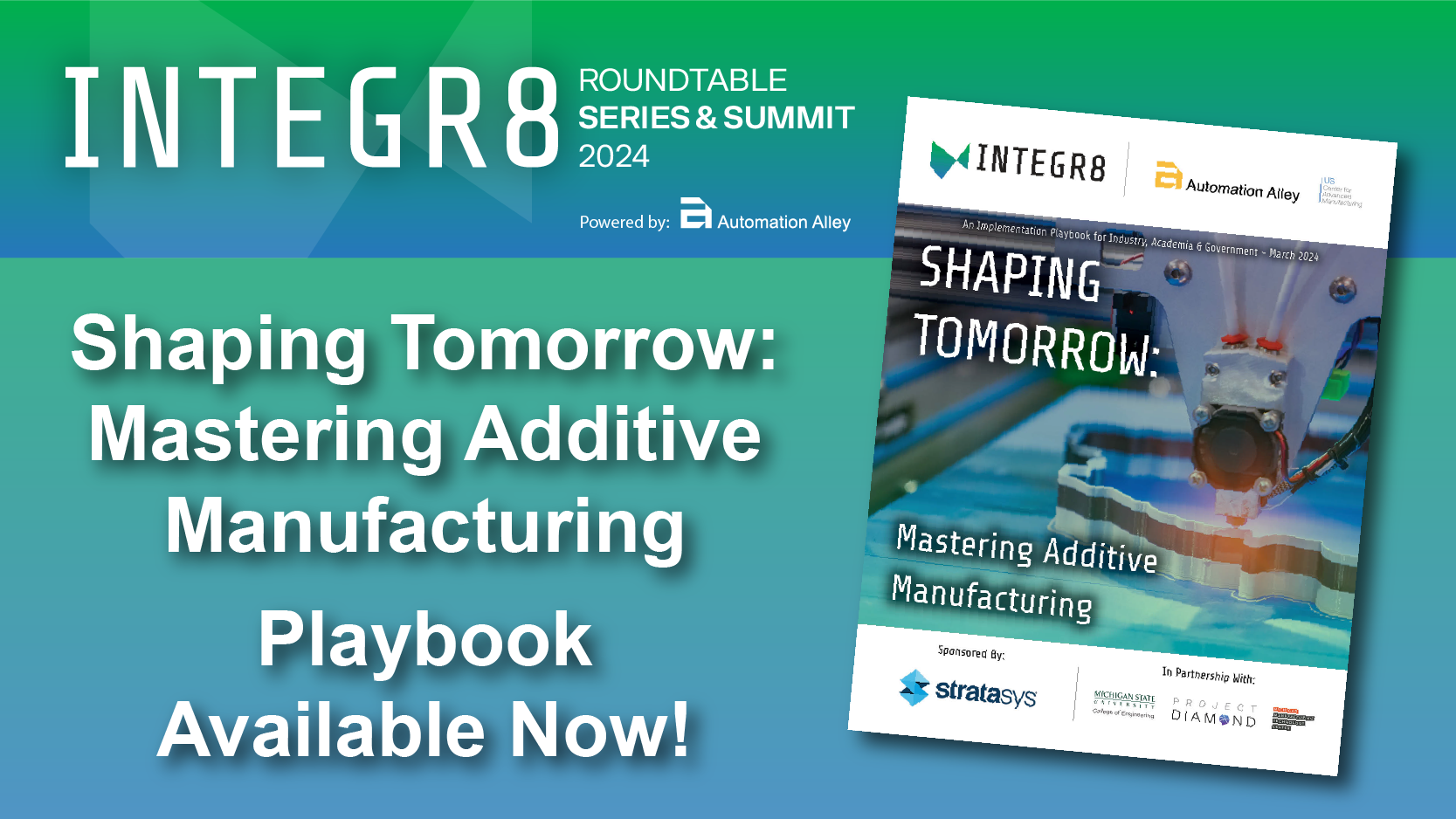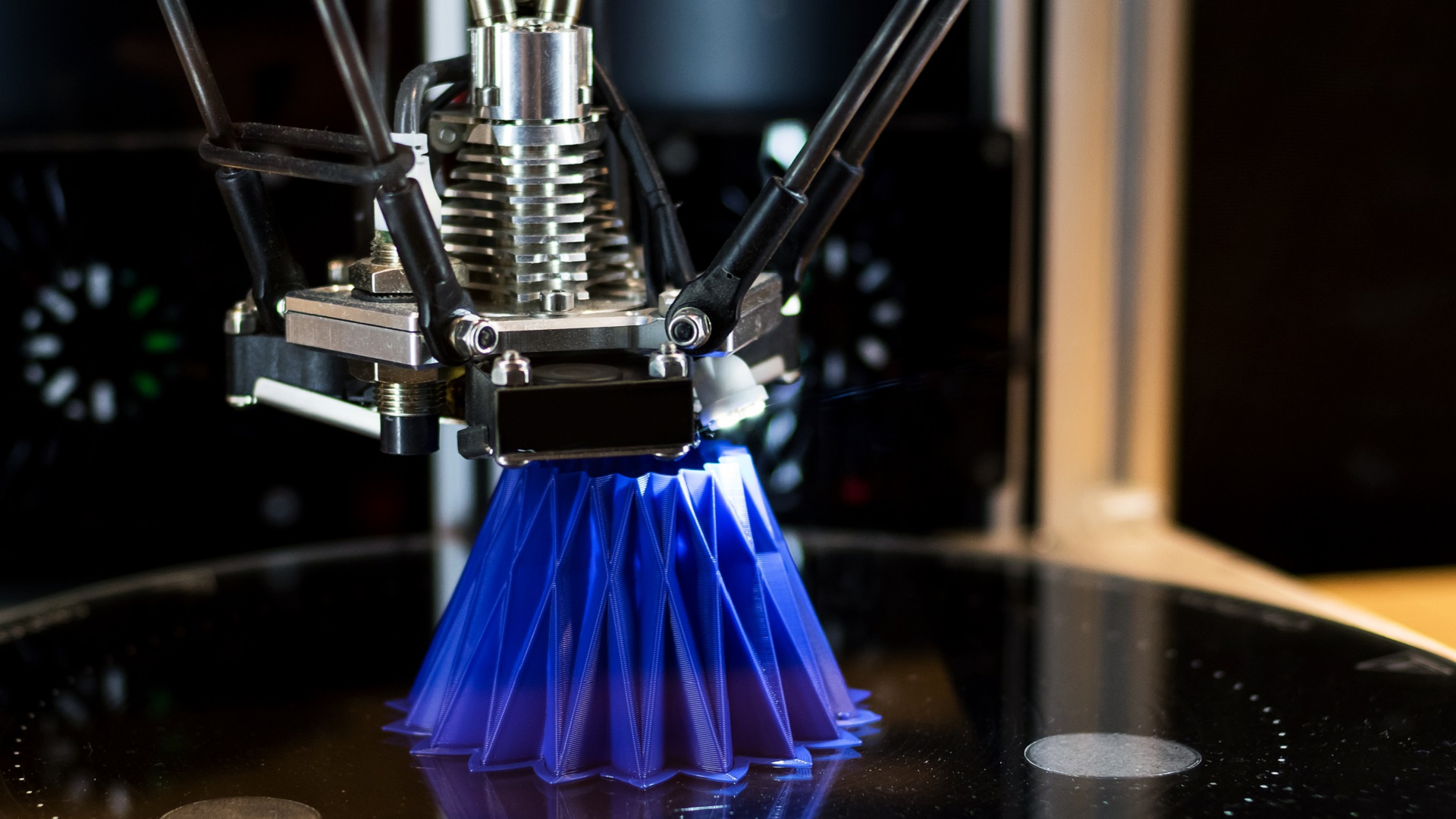From disrupting traditional production methods to driving sustainability, discover how additive manufacturing is reshaping industries and opening doors to new horizons. Explore the findings and insights of this additive manufacturing roundtable group comprised of industry leaders in government, academia, and industry.
While some Industry 4.0 technologies are more nebulous like Big Data and the Industrial Internet of Things, additive manufacturing (AM) is hands on and visual. You can see a new additively manufactured piece being printed and feel it, from a rocket booster the size of a truck to a micro-lattice part the size of a match head.
With this power and flexibility, the additive process is redefining the way factories approach and think about the design process. However, the change is not happening overnight.
“We’re talking about transforming a $13 trillion manufacturing industry. That’s not an easy task,” Stratasys Global Director of Transportation Fadi Abro said. “We’re not going to take all of those trillions and put them into additive manufacturing. But if you look at scale, $40 billion is invested in the 3D printing market today.”
For this transformation, it is important to establish a playbook for the journey into a distributed and additive manufacturing future. It requires a mindset shift, Abro added. “Additive manufacturing is not a single product, solution or material. It is a way of doing things. It’s also about localizing production. We need to have ways to react to supply chain problems, and additive manufacturing can be that answer.”
Read the article in full at Integr8series.com.
Sign up today for a free Essential Membership to Automation Alley to keep your finger on the pulse of digital transformation in Michigan and beyond. Michigan Business Network also spoke with Tom Kelly, President & CEO, Automation Alley, on this latest topic.
Chris had several questions about Integr8 Playbook #3: Additive Manufacturing that he wanted to find out from Tom:
Q. Thanks for coming back on our show to talk about Automation Alley’s series of Integr8 playbooks.
Your next one is focused on additive manufacturing – and we will get into that – but remind us again what this series of playbooks is?
· The 2024 Integr8 Roundtable Series offers invite-only roundtable sessions where leaders from industry, academia and government meet.
· Each roundtable is focused on a different topic or challenge related to the Industry 4.0 and the transition to digital manufacturing
· And then we publish a playbook from each roundtable that provides advice for manufacturers to help them overcome challenges
· It all builds momentum towards the Integr8 Roundtable Summit, to be held Oct. 3 in Detroit
Q. So, you just released the findings from your third roundtable. What was the focus? And can you tell us about your findings?
· Our third playbook was focused on additive manufacturing or 3D printing
· Additive manufacturing isn’t new – it’s been around for decades – but what is new is how advanced it has become and what it can do today
· Across the country, we are seeing manufactures do amazing things with 3D printing
o From rockets to sustainable housing
· While some Industry 4.0 technologies are more nebulous like Big Data and the Industrial Internet of Things, additive manufacturing (AM) is hands on and visual.
· You can see a new additively manufactured piece being printed and feel it, from a rocket booster the size of a truck to a micro-lattice part the size of a matchhead.
Q. What are the challenges? What is holding companies back from deploying it?
· A lot of manufactures remain stuck – they continue to do things the old way – and they are just not sure how to implement 3D printing
· And then there is the cost – the best 3D printers are not cheap, and we recognize that
· At Automation Alley, we encourage manufacturers to start small and we help them get started with funding and training through our Project DAMOnD program.
· The process starts with redefining how engineers design products. Design For Additive Manufacturing (DFAM) is a set of processes that focuses on the design, engineering, and production of components or end products through additive manufacturing.
· When designing components or products using DFAM, engineers consider material properties, build speed versus accuracy tradeoff, surface finish requirements, and structural integrity as they would with any regular build. Those elements are critical to manufacturing parts that can perform with quality
Additional background for MBN reference:
The third playbook explores what is possible with additive manufacturing and offers strategies and considerations for adopting an additive mindset. Topics discussed include:
· The importance of design for additive manufacturing (DFAM)
· Generative artificial intelligence design and additive manufacturing · Project DIAMOnD, a distributed manufacturing and additive manufacturing use case
· Additive manufacturing and sustainability
· Government support with Additive Manufacturing Forward (AM Forward)
· Integrating additive manufacturing programs in education
· Building a scalable framework
Q. You mentioned an Automation Alley program a few minutes ago that you said provides support for manufactuers that want to get into additive manufacturing – Project DIAMOnD? Can you tell us what that program is and how it works?
· For MBN preparation reference – Project DIAMOnD press release from last year: o Oakland County Awards $15 Million for Phase 2 of Project DIAMOnD – the World's Largest 3D Printing Network
· Yes, Project DIAMOnD was established in October 2020 by Oakland County and Automation Alley through CARES Act grants
· Last year, we received an additioanl round of funding from Oakland County has designated to support Project DIAMOnD,
· With that funding, we provide 3D printers to Oakland County manufacturers at no or reduced cost.
· Those manufacturers can use those printers however they want to use them
· But they are also on a network, and can be used across all of these companies to produce a common product
Q. What will be the focus of the next roundtable and when does that playbook come out?
· Our next playbook will tackle a big, hot topic – it will be about the rise of Artificial Intelligence and how it is reshaping manufacturing
· We will delve into AI's potential to transform industries, enhance decision-making, and foster innovation.
· More information about all the upcoming roundtables and their topics can be found at integr8series.com.
· That’s also where we are publishing the playbooks as they are developed.
“Shaping Tomorrow: Additive Manufacturing” is the third in a series of playbooks from the Integr8 roundtable series
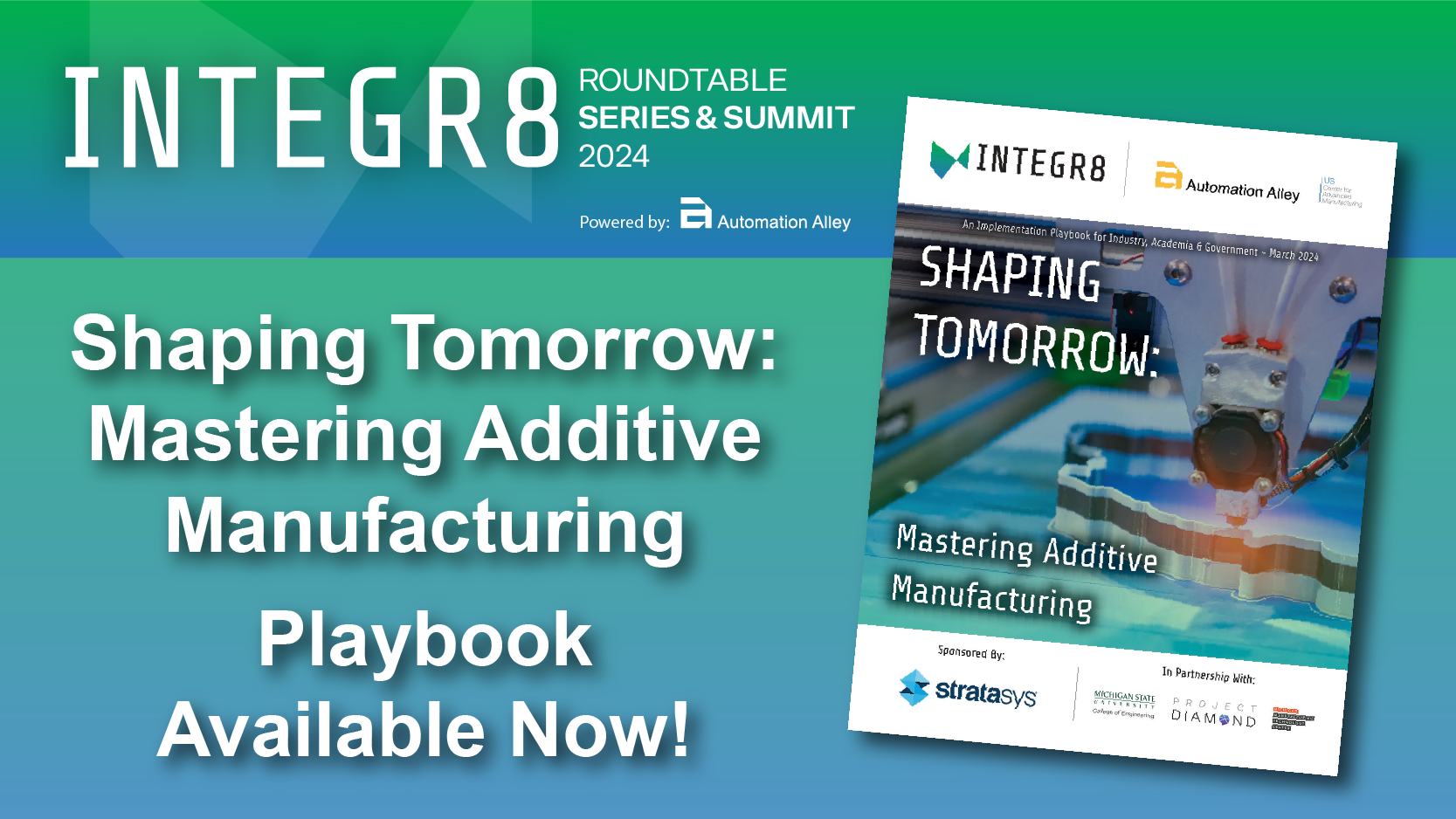 “Shaping Tomorrow: Additive Manufacturing” is available to view and download here, or click on the picture above.
“Shaping Tomorrow: Additive Manufacturing” is available to view and download here, or click on the picture above.“The additive process continues to redefine the way factories approach and think about how products are made. 3D printing provides manufacturers with the ability to be more precise and rapidly customizable than traditional machining and assembly lines,” said Tom Kelly, Executive Director and CEO of Automation Alley. “Pair that with generative design AI and distributed manufacturing and the possibilities for efficiency and flexibility are endless.”
- The importance of design for additive manufacturing (DFAM)
- Generative artificial intelligence design and additive manufacturing
- Project DIAMOnD, a distributed manufacturing and additive manufacturing use case
- Additive manufacturing and sustainability
- Government support with Additive Manufacturing Forward (AM Forward)
- Integrating additive manufacturing programs in education
- Building a scalable framework









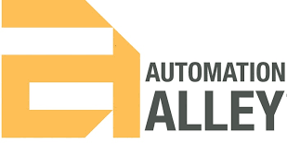
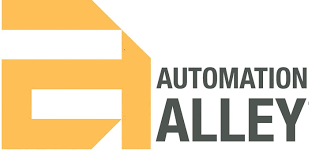
.jpg)

